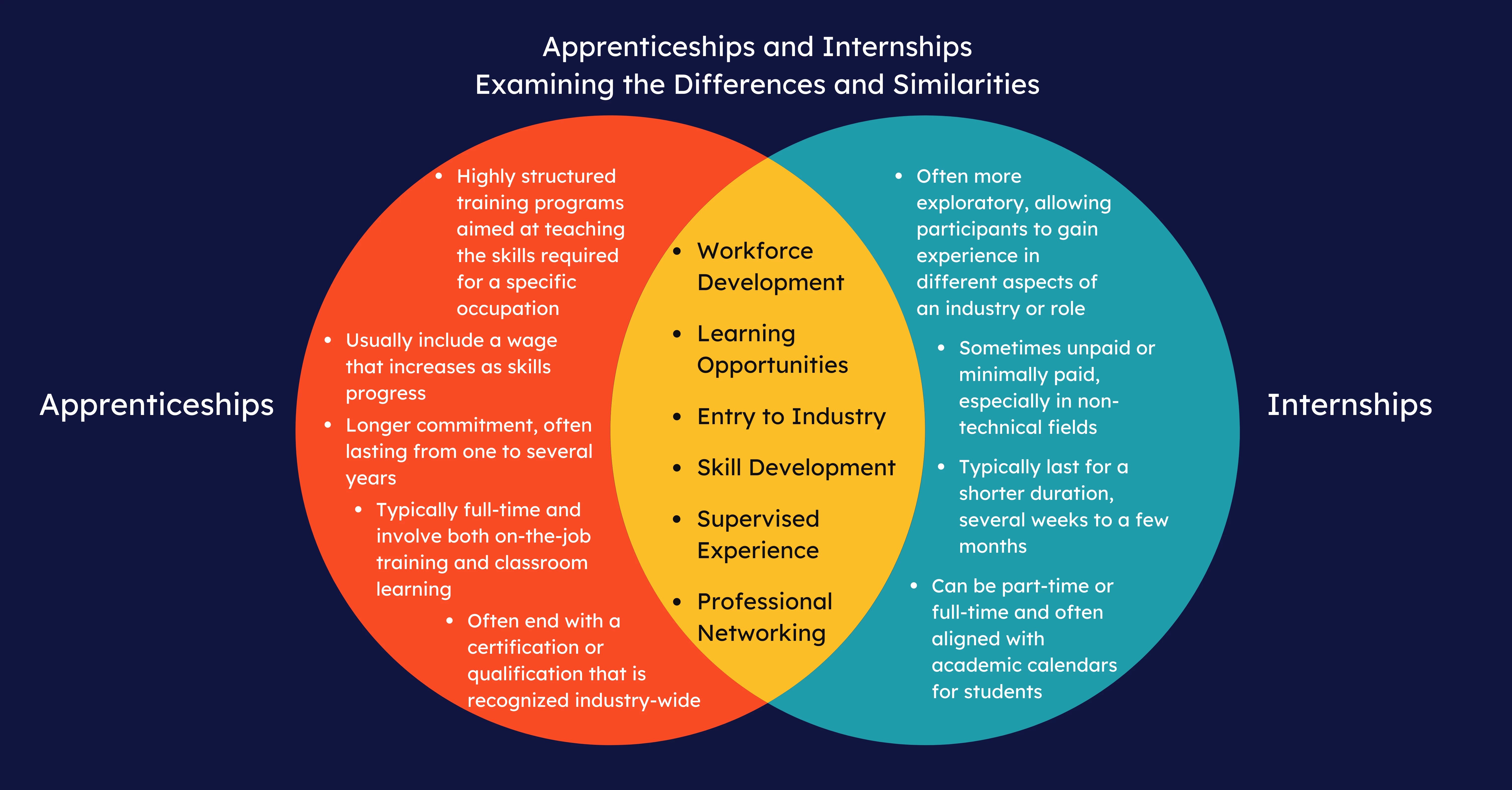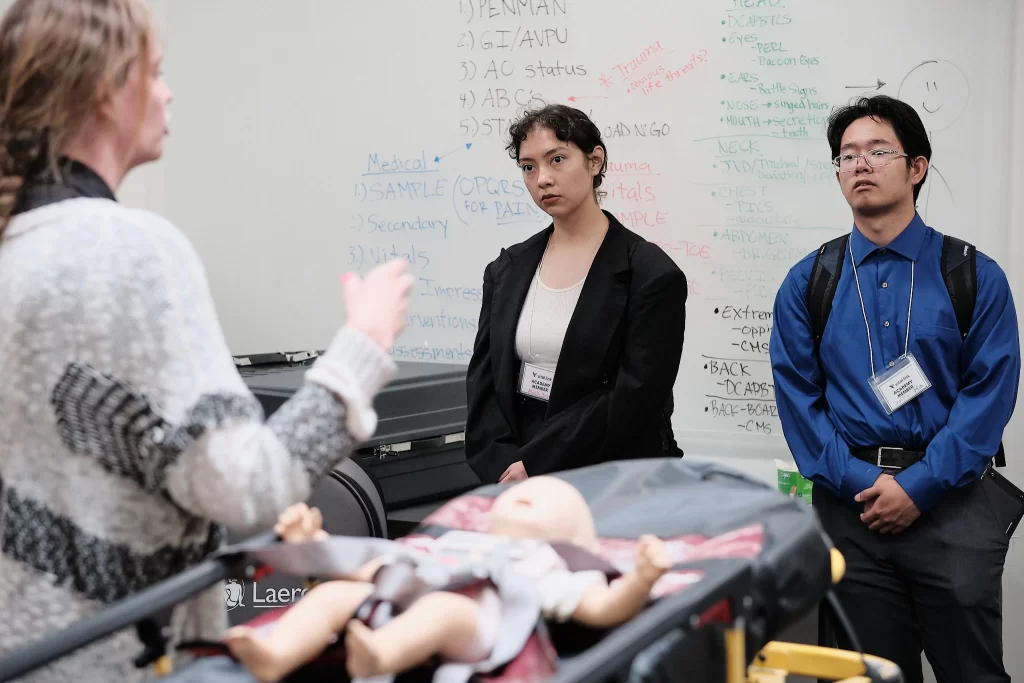In today's fast-evolving job market, gaining practical experience before graduating can greatly enhance employability and career clarity. Two popular pathways to gain such experience are through apprenticeships and internships. Although both options provide valuable opportunities for hands-on learning, they serve distinct purposes and offer different benefits. Here’s a closer look at each, based on insights from apprenticeship.gov, to help you decide which might be the best fit for your career goals.
What is an Apprenticeship?
An apprenticeship is a structured program that combines on-the-job training with classroom instruction, aimed at preparing individuals for specific skilled trades or professions. These programs are generally long-term, lasting anywhere from 1 to 3 years. During an apprenticeship, participants work closely with experienced mentors who provide individualized training and guidance throughout the duration of the program. This hands-on training is designed to master the skills necessary for a particular occupation that the employer needs (Source: apprenticeship.gov).
Key Features of Apprenticeships
- Duration: Typically 1-3 years
- Structure: Highly structured with a clear training plan focusing on specific occupational skills
- Mentorship: Direct mentorship from experienced professionals
- Compensation: Paid training that often leads to a full-time position
- Credential: Results in an industry-recognized credential
- Educational Benefits: May lead to a debt-free college degree
What is an Internship?
Internships are generally shorter-term experiences, usually lasting about 1-3 months, and are designed to give participants entry-level exposure to a particular field or industry. Unlike apprenticeships, internships may not follow a structured training plan and often do not focus on specific skill acquisition. The role of internships is typically to provide a basic understanding of the field, allowing participants to apply their academic knowledge in real-world settings. While some internships are paid, many are not and do not guarantee employment at the conclusion of the program (Source: apprenticeship.gov).
Key Features of Internships
- Duration: Short term, typically 1-3 months
- Structure: Less structured, often focusing on general work experience
- Mentorship: Does not always include mentorship
- Compensation: Often unpaid; paid internships are available but less common
- Credential: Typically does not result in a credential
- Educational Benefits: May offer college credit
Benefits of Apprenticeships and Internships
Apprenticeships are particularly valuable for those committed to entering a specific trade or profession that requires specialized skills and qualifications. They are an excellent pathway for those who prefer practical, hands-on learning and are looking for an assured transition into a career. Additionally, apprenticeships can significantly reduce educational expenses and provide a reliable route to steady employment.
Internships are crucial for students or recent graduates who are still exploring their career options and seeking to understand how their interests align with different industries. They provide a critical opportunity for networking, resume building, and gaining a breadth of experience that can be influential when entering the job market.

Choosing the Right Path
Deciding between an apprenticeship and an internship largely depends on your career goals, educational needs, and the specific opportunities in your desired field. If you're looking for a clear, structured path to a specific profession, an apprenticeship may be the best choice. However, if you're still exploring potential career paths or need a flexible option that aligns with your studies, an internship might be more appropriate.
Both apprenticeships and internships are excellent ways to bridge the gap between theoretical knowledge and practical application. By understanding the differences and advantages of each, you can better navigate your career planning and find the path that aligns best with your professional aspirations.
Addressing Workforce Gaps Through Apprenticeships and Internships
In Orange County, like many regions across the country, there is a significant mismatch between the educational output and the demands of the local labor market. A deep dive into the Orange County labor market statistics reveals substantial gaps in workforce needs across various sectors, which present both challenges and opportunities for students and job seekers.
Understanding the Workforce Gaps
According to the Orange County labor market statistics, there is a significant disparity between the number of educational awards, degrees, and certificates conferred at community colleges and other institutions, compared to the job market demands across 338 analyzed occupations. This mismatch indicates a critical need for targeted educational programs and career pathways to fill these gaps.
The sectors with the largest gaps highlight where the opportunities are most potent:
- Business and Entrepreneurship: This sector shows the largest gap, with a shortage of 22,793 positions.
- Health: Following closely is the health sector, with 19,524 positions unfilled.
- Education and Human Development: This sector has a gap of 9,898 positions.
On the flip side, sectors like Life Sciences and Biotechnology, and Agriculture, Water, and Environmental Technologies show the smallest gaps, with 423 and 574 positions, respectively. Interestingly, three sectors — Advanced Transportation and Logistics, Public Safety, and Retail, Hospitality, and Tourism — have recorded more awards from community colleges than from non-community college institutions, suggesting a better alignment with current job market demands.
Bridging the Gap with Vital Link and Educational Partnerships
To address these workforce gaps, Vital Link is stepping up to provide crucial career exploration opportunities to high school students. By introducing them to various industries and work environments, Vital Link helps illuminate paths that are often overlooked in traditional educational settings.
Vital Link Internship Opportunities
Additionally, in collaboration with the Garden Grove Unified School District, Vital Link is creating hands-on internship opportunities for high school seniors in sectors where the gaps are most evident. These sectors include:
- Business, Financing, and Accounting
- Graphic Design and Marketing
- Digital Arts, Information Technology, Computer Software, Coding, and Web Development
These internships not only provide practical experience but also help students make informed decisions about their future careers, potentially guiding them toward fulfilling roles in sectors that desperately need skilled workers. If you are interested in hosting an intern, contact Neda at neda@vitallink.org.
Vital Link Apprenticeship Opportunities
We are actively seeking to fill two apprenticeship positions in business, aimed at roles in office management and customer service. These apprenticeships are designed to offer in-depth training and direct entry into careers that are essential to the functioning of any business entity, addressing critical needs in the local economy. See our open apprenticeship positions here.
Conclusion
The data from Orange County labor market statistics highlights a clear and present need to align educational outcomes with job market demands. Through targeted internships and apprenticeships, organizations like Vital Link not only contribute to closing this gap but also empower the next generation of workers with the skills and insights needed to thrive in under-served sectors.
This article was written by Cheri Maggard. If you have any questions or need further information, please contact us at cheri@vitallink.org.
References
- Madrigal, J., Crete, J., & Poore, J. (2023). Orange County Labor Market Overview, (pp. 1–151). Orange County Center of Excellence for Labor Market Research.
- Office of Apprenticeship. (n.d.). What is the difference between an apprenticeship and an internship? Apprenticeship.gov. https://www.apprenticeship.gov/help/what-difference-between-apprenticeship-and-internship


